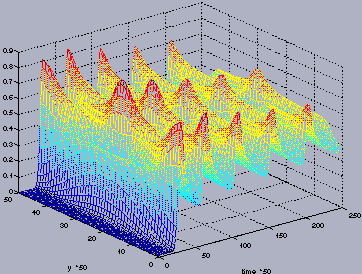
|

|

|

|
|
Device design
|
Nondestructive testing
|
Imaging
|
Bradley Alpert, Leslie Greengard, and Thomas Hagstrom, Rapid Evaluation of Nonreflecting Boundary Kernels for Time-Domain Wave Propagation, SIAM Journal on Numerical Analysis 37, 1138-1164 (2000),
Bradley Alpert, Leslie Greengard, and Thomas Hagstrom, Nonreflecting Boundary Conditions for the Time-Dependent Wave Equation, Journal of Computational Physics 180, 270-296 (2002),
B. Alpert, L. Greengard, T. Hagstrom, An Integral Evolution Formula for the Wave Equation, Journal of Computational Physics 162, 1-8 (2000), and
Bradley K. Alpert and Yu Chen, A Representation of Acoustic Waves in Unbounded Domains, Communications in Pure and Applied Mathematics LVIII (10), 1358-1374 (2005).
A project of the Mathematical and Computational Sciences Division of NIST.
Bradley K Alpert Last modified: Thur Jan 26 8:54:20 MDT 2005